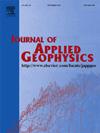Integrating geophysical methods, InSAR, and field observations to address geological hazards and buried archaeological features in urban landscapes
IF 2.2
3区 地球科学
Q2 GEOSCIENCES, MULTIDISCIPLINARY
引用次数: 0
Abstract
This study addresses the limited application of integrated geophysical and remote sensing methods in detecting and characterizing underground voids in volcanic settings, while literature primarily focused on karst sinkholes. It investigates a collapse-affected area near the historical center of Civita Castellana (Viterbo, Italy), where volcanic deposits and subsurface cavities were identified through boreholes and field surveys. The study aims to estimate the spatial configuration of hypogeal environments using non-invasive surface and near-surface geophysical techniques. A multi-scale and multi-source approach was employed, integrating electrical resistivity tomography (ERT), ground penetrating radar (GPR), and (interferometric synthetic aperture radar) InSAR. ERT, using a dipole-dipole configuration across four profiles with 1 m inter-electrode spacing, revealed high-resistivity anomalies (>400 Ohm·m) linked to buried cavities at depths of 2–6 m. The largest void spans approximately 4 m2 with resistivity values exceeding 900 Ohm·m. GPR surveys, performed with a 100 MHz antenna along 10 transects, corroborated ERT results by delineating subsurface discontinuities and void geometries down to 10 m depth. InSAR provided large-scale subsidence patterns, highlighting localized zones with downward displacement rates up to −10.0 mm/year, aligning with geophysical findings and suggesting a continuous cave network contributing to surface instability. The results underscore the effectiveness of combining ERT, GPR, and InSAR for detecting underground voids in urbanized volcanic settings. This integration enables precise delineation of subsurface geometries and enhances risk assessment. The findings have considerable implications for urban planning, hazard mitigation, and cultural heritage preservation, offering critical insights into hypogeal environments in archaeologically and historically significant areas.

求助全文
约1分钟内获得全文
求助全文
来源期刊

Journal of Applied Geophysics
地学-地球科学综合
CiteScore
3.60
自引率
10.00%
发文量
274
审稿时长
4 months
期刊介绍:
The Journal of Applied Geophysics with its key objective of responding to pertinent and timely needs, places particular emphasis on methodological developments and innovative applications of geophysical techniques for addressing environmental, engineering, and hydrological problems. Related topical research in exploration geophysics and in soil and rock physics is also covered by the Journal of Applied Geophysics.
 求助内容:
求助内容: 应助结果提醒方式:
应助结果提醒方式:


